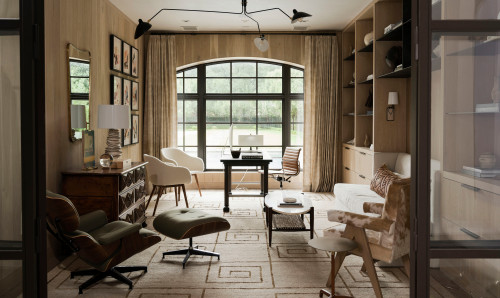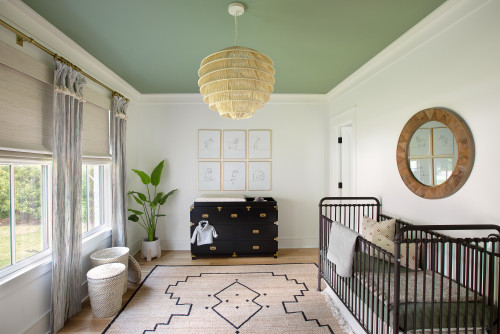Wallpaper has come a long way. The latest modern patterns are hot among design trendsetters. So if you’re dying to deck your walls in some jazzy pattern, you’ll want to learn how to hang wallpaper. It’s not hard, but it’s also not something you want to wing without a little guidance first (especially since it can be difficult to remove wallpaper). So, heed this advice to get it right on your first whirl.
Tools and materials you’ll need:
- Wallpaper (Measure your room first to see how much you need, then add about 10% extra for pattern matching.)
- Tape measure
- Scissors
- Box cutter with extra blades
- Sanding pad or paper
- Wallpaper primer
- Wallpaper paste
- Roller to apply the paste
- Large table covered in a plastic tablecloth or dropcloth

Step 1: Prep the walls
Check your walls to make sure they’re clean and smooth. Fill in holes, and if you find any roughness, sand it back. Next, prime the walls with a wallpaper primer. This is also called sizing the walls, although it has nothing to do with measuring. You do this the same way you apply paint, with an even coat of primer across the entire surface. If you can see through your wallpaper, use a white primer; if you’re hanging dark wallpaper, it helps to tint your primer the same color.
Step 2: Cut your wallpaper strips
Measure your walls from ceiling to base, then cut your first length of wallpaper plus 4 to 5 inches extra, so you can later trim the top and bottom to fit exactly. For solid or vertical-striped wallpaper, you can continue cutting strips the same way. If you’re working with a pattern, there’s another important step: Before you cut your next piece, align it with your first piece to make sure the pattern will match or continue when the strips are hung next to each other. You may need to trim a few inches before measuring out the next piece to make sure the pattern matches. Do the same for all of your lengths.

(Mahones Wallpaper Shop/YouTube)
Also, odds are you will need to cut one skinnier strip of wallpaper to fit in one corner. If you can, plan to hang that sheet of trimmed wallpaper in a less conspicuous place, like behind the door, so it’s less noticeable. You will then start hanging the wallpaper starting from the opposite corner. Or, if you want your pattern to have a center focal point, you can start in the center and move toward the outer edges (which means you could end up with two skinny strips instead of one).
Step 3: Paste and book your paper
If you’re using unpasted paper, apply paste to the top half of your strip with a roller. Then fold the newly pasted paper over from the top to the midpoint, sticky sides together, taking care to not crease the fold. It will stick to itself, but it’s not hard to pull apart later. This is called “booking,” which allows the paste time to expand and get stickier before you place the strip on the wall (check your wallpaper label for recommended booking time, typically five to 15 minutes). Once the top half of your strip is booked, repeat the process for the bottom.

(Mahones Wallpaper Shop/YouTube)
“The paste will typically dry permanently in 24 to 48 hours, which gives you plenty of time to hang it and make any necessary changes,” says Kassin Adelman, founder and CEO of IDF Studio in San Francisco.
If all of this is already starting to sound messy and complicated, you have another option: “Buying a self-adhesive wallpaper will make your life much easier,” says Adelman. “There are so many great options like Joss & Main, or a removable version from Tempaper that isn’t permanent and can be used in rentals or rooms you may want to change more often.”
Step 4: Apply paper to the wall
Before you put your paper on the wall, remove any outlet and switch covers. (You should cut power while doing so, just to be safe.) You will be laying the paper over the outlets, then cutting them out later and placing the covers back on at the end.
Place your first strip flush to one corner of the wall with about an inch of overlap at the top (which you will trim off later). Once your paper is placed right, use your hands to press the sheet to the wall and smooth it from the top down.
“By starting at the top, you have gravity on your side, which makes the process easier,” says Adelman. By the time you reach the bottom, you should have an inch or two of extra paper to trim later.
Once the first strip is down, repeat the process with the next, making sure that your pattern aligns if that’s your goal.
Step 5: Cut to fit
Once all your wallpaper is in place, use your box cutter to carefully cut around any electrical outlets, as well as the extra paper off the top and bottom. Place the outlet and switch covers back on, and you should be in business!
For this and similar articles, please visit Realtor.com





















